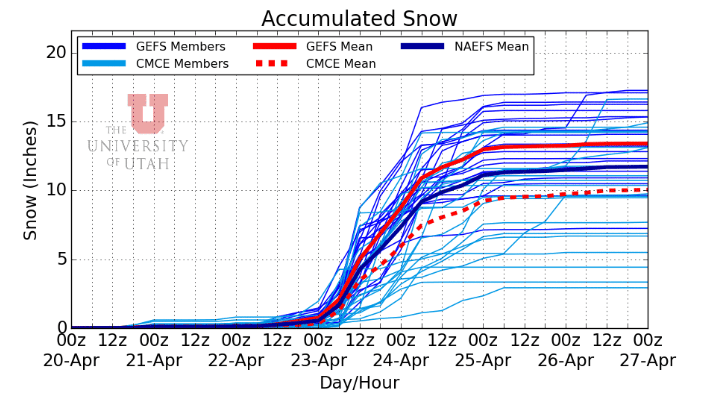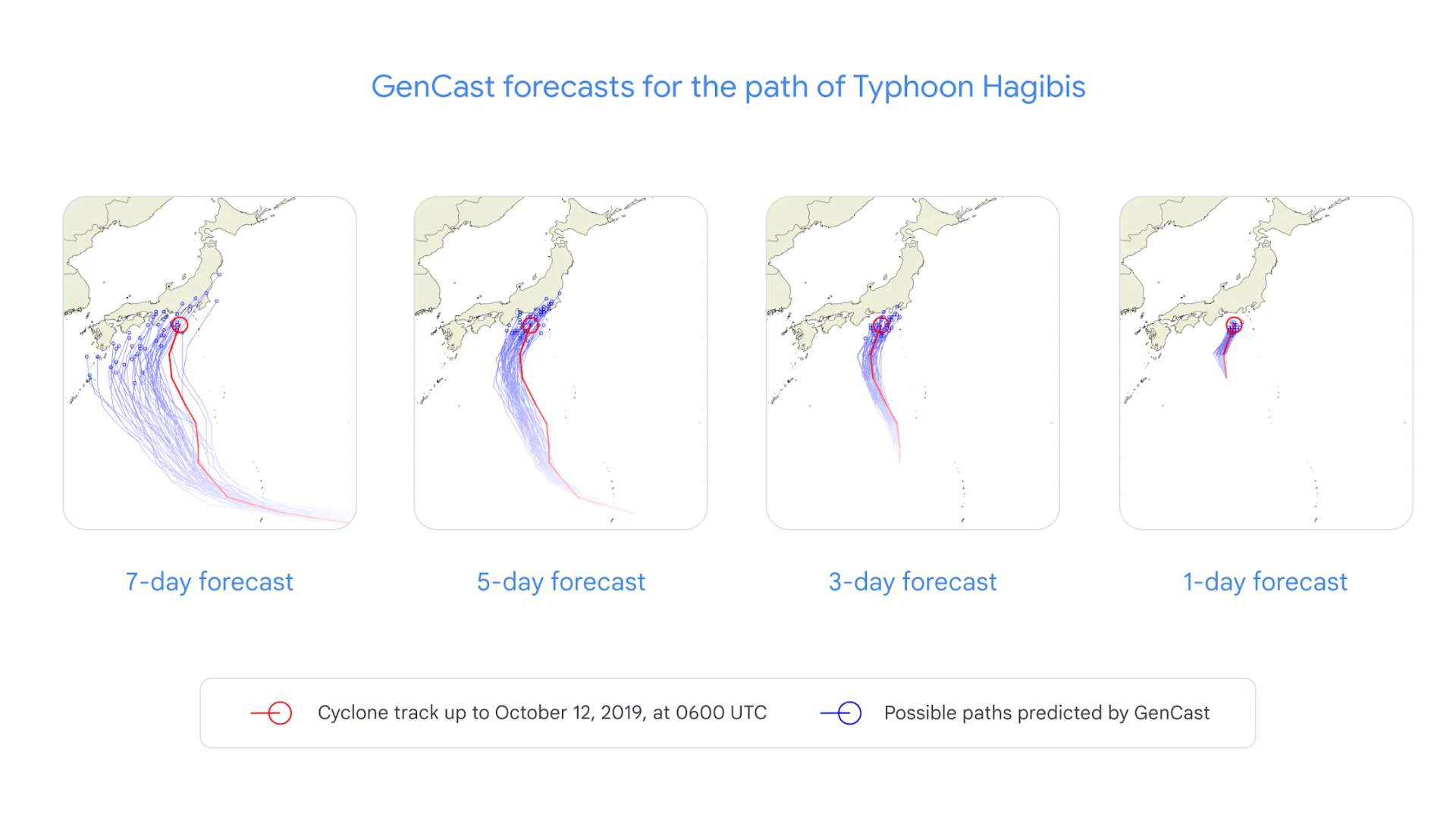
High-stakes decisions in the alpine depend on getting the forecast right. A month’s worth of anticipation can hinge on whether a distant storm sets up over the northern Rockies or takes a hard turn somewhere over the Pacific. At a time when sudden thaws, unusual precipitation patterns, and volatile storm tracks are becoming all too common, the value of pinpointing a powder day up to two weeks in advance cannot be overstated. Skiers and snowboarders need more than guesswork—they need tools to paint a clearer picture of what’s coming. Enter GenCast: a new AI ensemble model from Google DeepMind that aims to push long-range weather forecasting into a fresh era of reliability.
- Related: Machine Learning is Revolutionizing Weather Forecasting: Here’s What That Means for Your Ski Season
For decades, most forecasts offered a single snapshot of future conditions, a best guess that was often spot-on for a few days, then grew less confident further out. Anyone who’s tried to plan a hut trip or select a perfect storm window for a long weekend in the mountains knows this frustration. Weather, especially in complex alpine terrain, refuses to be locked down by a single scenario. That’s why meteorologists and forecasters rely on ensemble forecasts—multiple runs capturing a set of possible futures. Previous ensemble systems made significant strides, but their accuracy and reliability often wavered as days turned into weeks.

GenCast combines a cutting-edge diffusion model with the full sweep of historical global weather data. Unlike some AI models that borrow techniques from image or music generation, GenCast is tuned to Earth’s spherical geometry and the subtle dance of the atmosphere. Trained on four decades of temperature, wind, and pressure readings, it has learned to tease out complex patterns that affect local snowfall from the largest weather systems. Impressively, it operates at a resolution fine enough—about a quarter-degree latitude and longitude—to broadly capture the shifting moods of the mountains. Even more remarkable is its speed: producing a 15-day ensemble forecast in around eight minutes, a fraction of the time traditional physics-based models require.
This efficiency and detail matter when looking deep into the weather horizon. For anyone dreaming of deep powder in the Wasatch or the Sierra, getting a heads-up on a possible multi-foot storm 10 days before it hits can mean reorganizing schedules or booking a last-minute backcountry hut. A robust ensemble forecast doesn’t just say, “It’s going to snow.” It reveals a range of outcomes: maybe 30 out of 50 scenarios dump significant snow over your local resort, or perhaps the ensemble spread widens and indicates uncertainty—valuable information when planning a big objective. Instead of relying on a single, shaky prediction, skiers can now better consider how likely it is that conditions align for steep and deep turns.

GenCast’s edge becomes even more evident when the weather turns severe. Big dumps can sometimes accompany dangerous winds or unusual temperature swings that shape avalanche risk. GenCast excels at these extremes, offering a better handle on intense storms, powerful gusts, and abrupt warming events. It even outperforms the top operational ensemble forecasts in predicting tropical cyclone tracks. By nailing down crucial variables, GenCast can help inform avalanche mitigation strategies and operations at resorts, aiding backcountry pros in making safer calls and assisting the everyday powder hound find the deepest snow.
Better forecasting doesn’t just help the individual powder lover. When a forecast can be trusted two weeks out, resorts can plan staffing and grooming schedules more effectively, for example. Avalanche centers get a clearer picture of upcoming instability, improving their ability to issue timely advisories. Local meteorologists, working closely with these advanced models, can refine their assessments, and scientists can leverage the open-source code and data to innovate further.
This synergy of traditional forecasting know-how and cutting-edge AI promises a new era of environmental intelligence. GenCast isn’t just about cranking out numbers; it’s changing the conversation around what’s possible in weather prediction. Long-range precision brings an element of foresight that can help everyone—from resort managers to the everyday skier—adapt more confidently to a world where familiar patterns are shifting and certainty is hard to come by.
Ultimately, it’s still about that feeling—standing atop a ridge, peering into a snowy abyss, and knowing the turns below will be worth it. With GenCast and models like it, that feeling can be backed by a richer understanding of the future’s possibilities. Snow may remain unpredictable, but the tools for unraveling its mysteries are getting sharper, faster, and more enlightening. It’s the dawn of a new chapter in weather forecasting, and it brings the promise of more perfect days on the mountain horizon.
